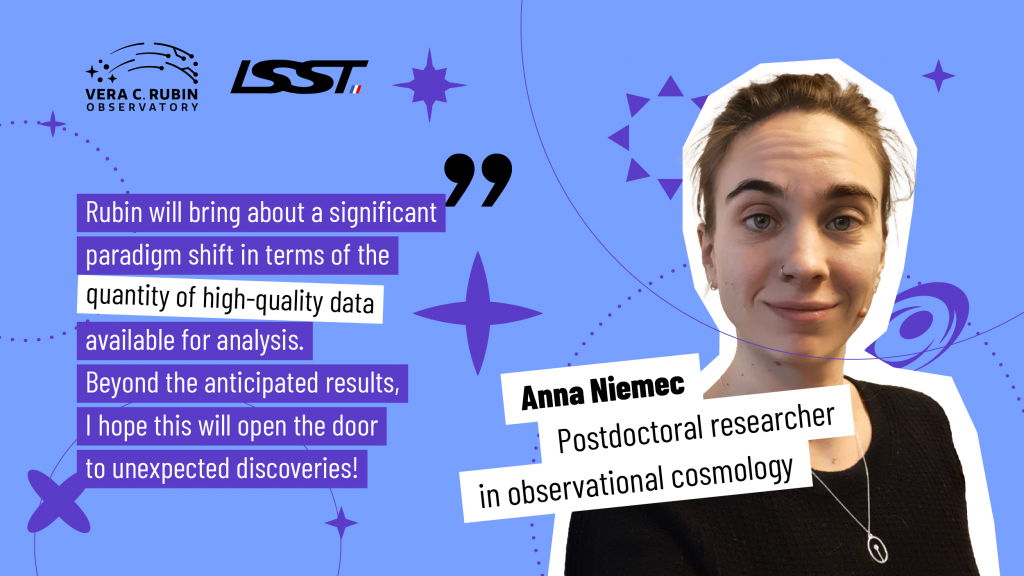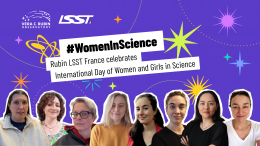Since 2015, every year on February 11, the International Day of Women and Girls in Science is celebrated. Launched by the United Nations General Assembly, this initiative aims to promote women’s and girls’ access to and participation in science, as today women represent only 33% of researchers worldwide and only 35% of students in science and technology-related fields.
The Rubin LSST France collaboration has joined this initiative by highlighting some of the women in the collaboration. Whether they’re researchers, engineers, postdoctoral researchers or Ph.D. students, find out more about their jobs, their research topics, and what makes them so passionate about the Rubin project.
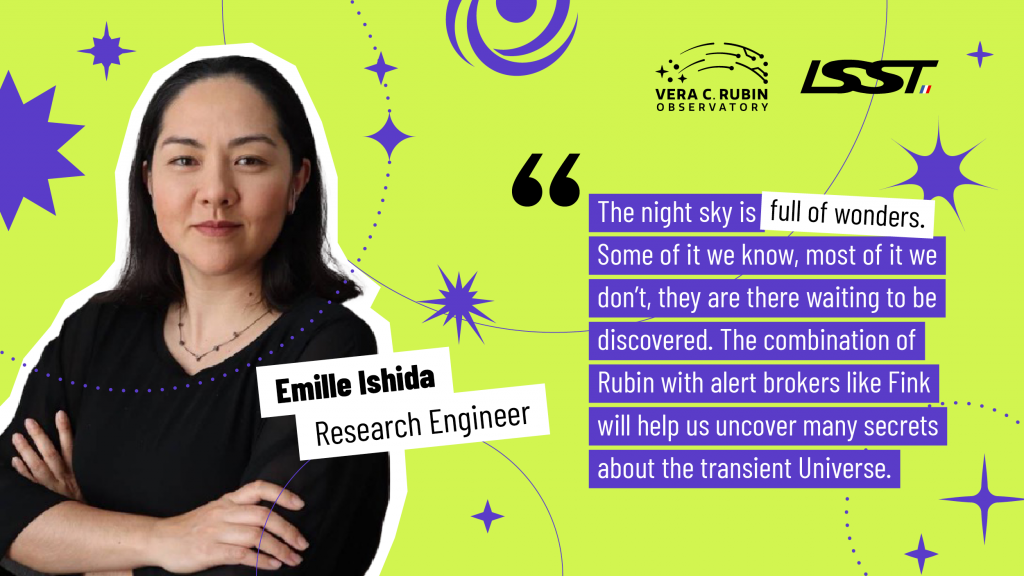
Emille Ishida is a research engineer at Laboratoire de Physique de Clermont (CNRS, Université Clermont Auvergne) and one of the leader of the Fink broker.
Fink is an international collaboration proposing a system capable of managing the unprecedented volume of alerts sent by the Rubin Observatory in real time, alerting scientists to any notable changes from previous observations.
Marine Kuna is an associate professor and researcher in particle physics and cosmology at Laboratoire de Physique Subatomique et de Cosmologie (CNRS, Université Grenoble Alpes). She is the Stellar Stream Project Lead in the Dark Energy Science Collaboration. Its target is the detection of dark matter sub-halos through their interaction with stellar streams orbiting the Milky Way. Dark Matter haloes that small have never been observed. Measuring their abundance will be a precious clue to sort out among the many dark matter models. Marine Kuna is also co-supervisor of a Ph.D. thesis on blending, that is the superposition of galaxies in Rubin LSST images.
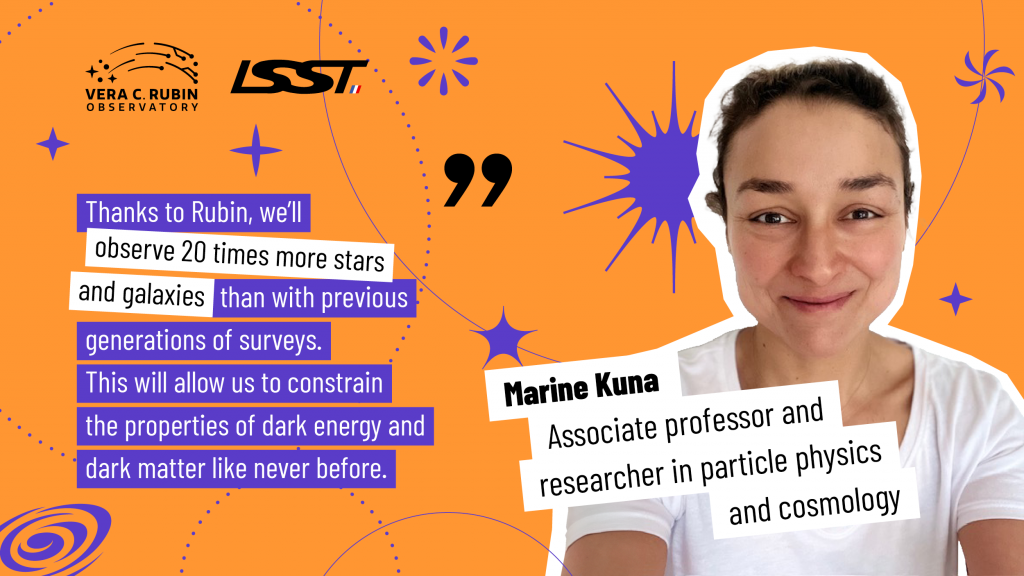
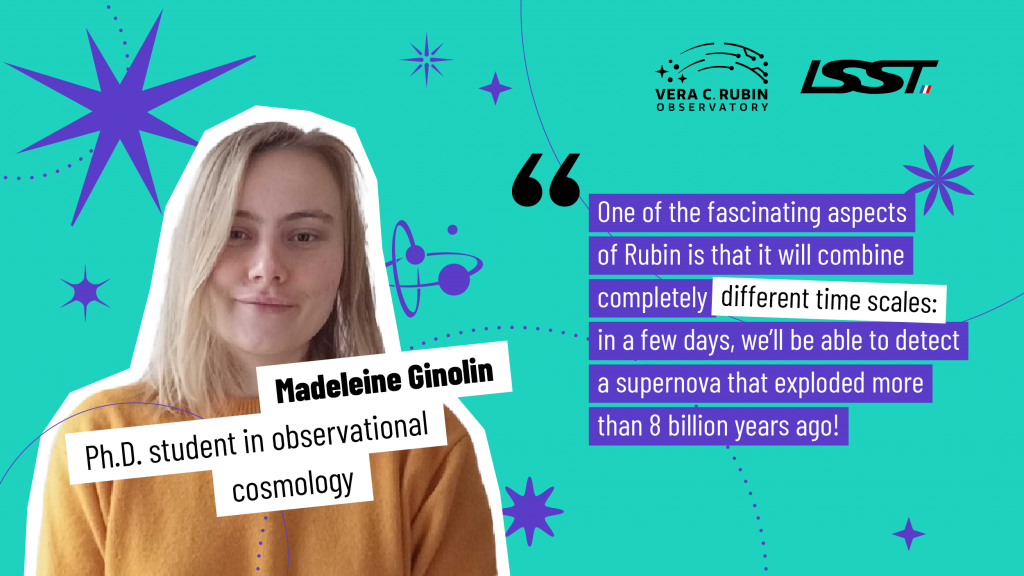
Madeleine Ginolin is a Ph. D. student in observational cosmology at Institut de Physique des 2 Infinis de Lyon (CNRS, Université Lyon 1). She is working on the ZTF sample of nearby supernovae (where observational biases are limited) to improve our knowledge of their behavior. This knowledge will then be used to process data from the distant supernovae that will be observed by Rubin. Supernovae are critical distance proxies for measuring the Hubble-Lemaître constant and determining the equation of state for dark energy.
Marina Ricci is a researcher in observational cosmology at Laboratoire Astroparticule et Cosmologie (CNRS, Université Paris Cité, Observatoire de Paris, CEA, CNES). She is involved in the Dark Energy Science Collaboration which prepares the cosmological analyses of the Rubin LSST data. She studies galaxy clusters and is also involved in the organization of this major international collaboration.
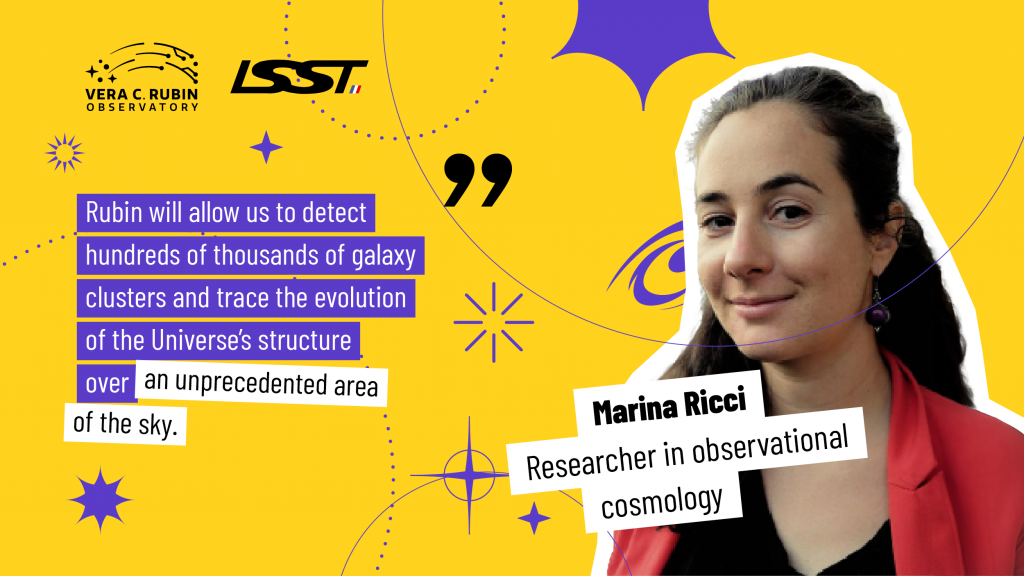
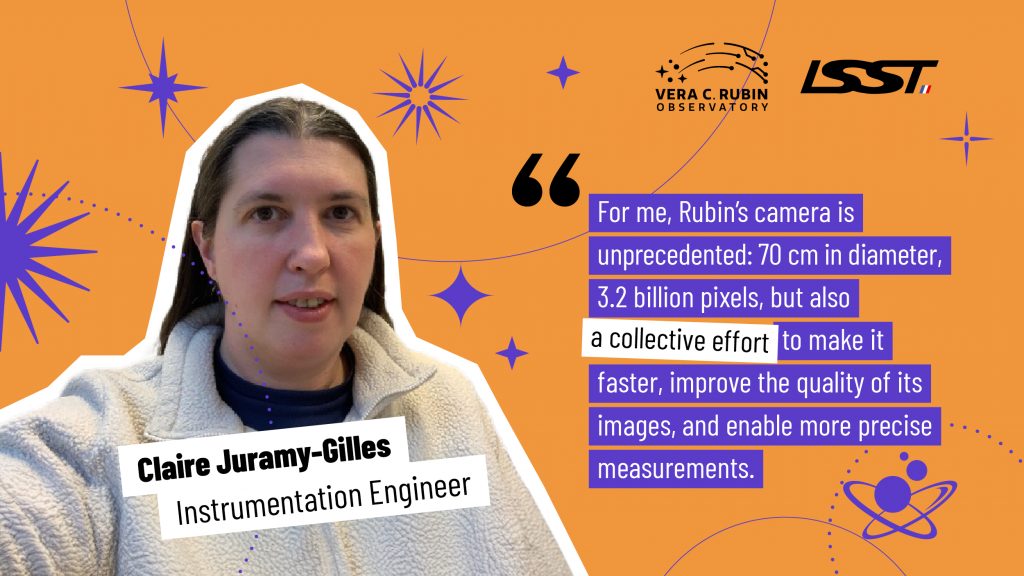
Claire Juramy-Gilles is an instrumentation engineer at Laboratoire de Physique Nucléaire et de Hautes Énergies (CNRS, Sorbonne Université et Université Paris Cité). She contributed to the design and testing of the LSST camera’s electronics, and to optimizing the operation of its CCD sensors. She was also involved in building the filter changer system and integrating it into the camera. Finally, she is currently leading a working group of engineers and researchers to improve the camera’s performance.
Nicoleta Pauna is associate professor and researcher in physics at Laboratoire de Physique de Clermont (CNRS, Université Clermont Auvergne). Her work is part of an effort to characterize CCD detectors to correct for certain instrumental effects. The camera’s focal plane is equipped with high-resistivity CCDs, whose increased sensitivity makes it possible to probe further into the Universe. Calibration of the sensors is a critical point in the control of systematic errors.
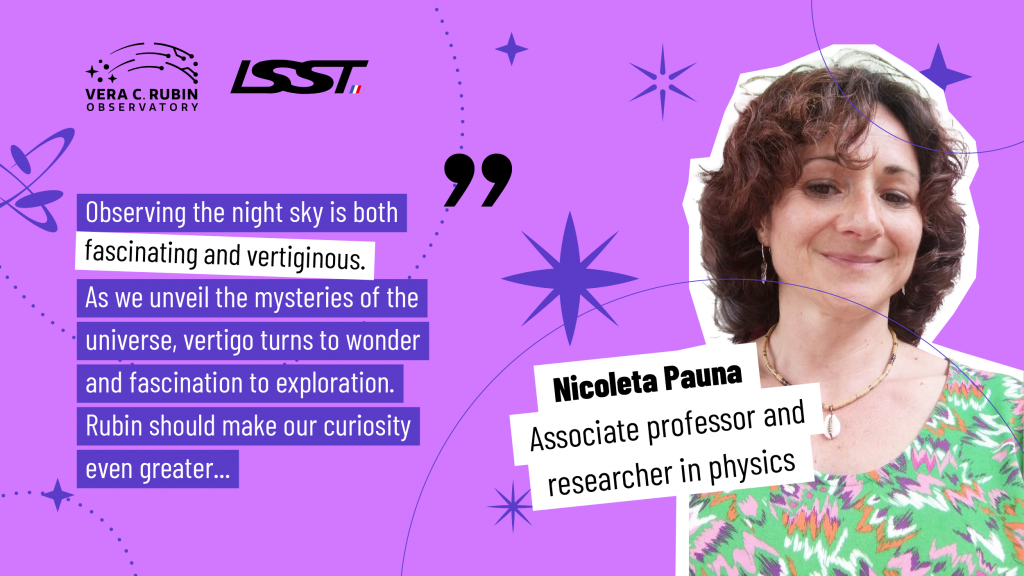
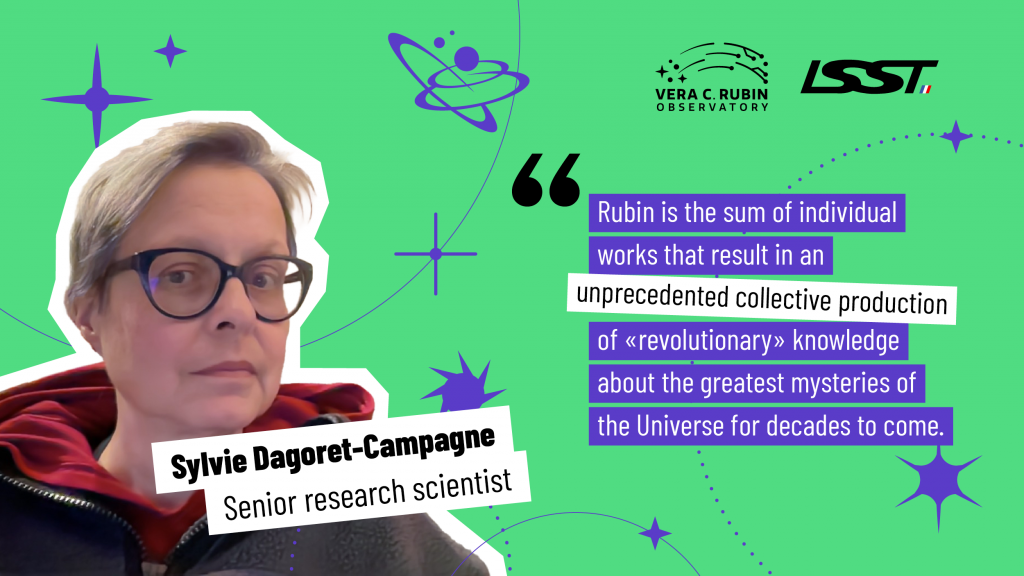
Sylvie Dagoret-Campagne is a CNRS senior researcher scientist at Laboratoire Irène Joliot Curie IJCLab (CNRS, Université Paris Saclay, Université Paris Cité).
Her work on large-scale galaxy surveys, such as the Rubin LSST, focuses both on accurately measuring the fluxes of distant galaxies by correcting for variations in atmospheric transparency, and on estimating their distances, which are essential for testing models of the growth of the Universe’s large-scale structures.
Anna Niemec is a postdoctoral researcher in observational cosmology at Laboratoire de Physique Nucléaire et de Hautes Énergies (CNRS, Sorbonne Université et Université Paris Cité). Her work focuses on gravitational lensing, a technique that enables us to trace the distribution of matter in the Universe, including the mysterious dark matter. She is also involved in preparing cosmological analyses within the Dark Energy Science Collaboration.
